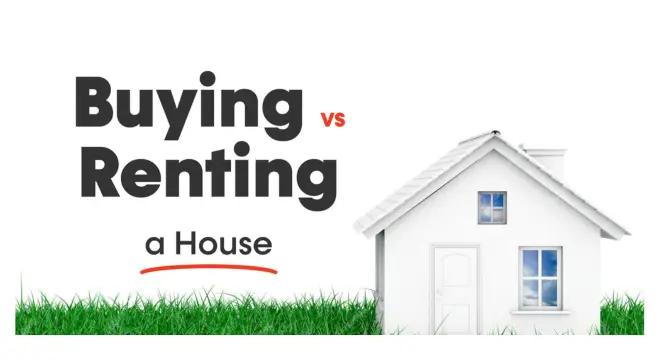Louis C.K. Sells New YorkShelter Island Mansion for $4.35M
I read the filings and the coverage, and here’s the short version you want up front: Louis C.K. listed his 123-year-old Shelter Island estate, Primrose Cottage, in early August for $4.3 million — and it went into contract within the month. The deal closed at $4.35 million, which is $50,000 above asking.
What jumps out to me is the speed. Homes on Shelter Island typically sit on the market for months — Realtor.com pegs the median at about 137 days — but Primrose Cottage spent just 18 days listed. That gap tells you there was either a very motivated buyer, an expertly timed price, or both.
The sale names Carl Gambino and Marco Maida of the Gambino Group at Compass as the agents who handled both sides. That’s the kind of brokerage pairing that moves luxury listings fast when the buyer and seller lines up neatly.
You probably want to know why this matters beyond celebrity gossip. For me, the fast, above-asking sale signals a rare mix: historic pedigree, waterfront demand, and just enough modern upgrades to make a 1901 Tudor feel livable today. What do you think tipped the scales — the history, the dock, or the price.
A Smart Flip: How Louis C.K. Turned a 2014 Purchase Into a Big Win

When I looked at the property records, the first thing that stood out was the timeline. Louis C.K. bought Primrose Cottage back in 2014 for about $2.44 million. Eleven years later, he sold it for $4.35 million — that’s nearly an 80% jump before closing costs or renovations.
It’s not just a lucky flip. According to Realtor, Shelter Island’s luxury homes don’t move this quickly or this profitably unless the listing strategy is spot-on. Pricing the mansion at $4.3 million—right below its perceived market ceiling—was clever. It positioned the estate as “attainable exclusivity,” something wealthy buyers often respond to emotionally.
If you’ve ever followed real estate in the Hamptons or the East End, you know it’s not just about square footage or finishes. It’s about narrative. And Louis C.K.’s home had plenty of that—history, preservation, and privacy. That combination makes a sale feel less like a transaction and more like buying a story.
I always tell clients or readers: the fastest sales happen when a property isn’t just priced right—it feels right. And clearly, Primrose Cottage hit that sweet spot.
Inside Primrose Cottage: Where History and Humor Collide
When you look beyond the headlines, the real charm of this deal is in the house itself. Primrose Cottage isn’t just old—it’s storied. Built in 1901, the New York Post reports that it once hosted President Theodore Roosevelt and his then–Vice President William McKinley as a retreat spot. Some accounts even say playwright J.M. Barrie introduced Peter Pan here during an informal reading on the nearby Westmoreland Farm. Add in rumored summer visits from Babe Ruth, and you’ve got a house that reads like a chapter out of American folklore.
What Louis C.K. did next shows some respect for that history. The Post notes that he personally oversaw restoration of the home’s original millwork and six fireplaces, preserving the bones that gave the place its century-old charm. He also added the kind of modern touches that make an old Tudor livable today — a heated Gunite pool, hot tub, chef’s kitchen with checkered floors, and a deep-water dock fit for multiple boats.
Walk through the photos and you’ll see it — the beamed ceilings, curved staircase, and the sunroom with its soft green latticework. The kind of design that feels personal, not staged. This wasn’t a sterile celebrity mansion; it was clearly someone’s lived-in creative retreat.
I actually spotted some fascinating discussions about this sale in one of the real estate update channels on WhatsApp — people were debating whether the home’s legacy or its upgrades drove the final price. Shows how even seasoned buyers read meaning into design and history differently.
The 18-Day Mystery: Why It Sold So Fast
Every Shelter Island broker I’ve spoken to will tell you — 18 days is unheard of for a seven-figure listing. So, why did this one move so fast?
A few things clicked. First, the price point was believable. After years of listings that overshot market expectations, this number made sense to serious buyers. Second, celebrity factor. Like it or not, owning a home once lived in by a famous comedian adds a soft layer of status. And third, timing — right now, demand for restored waterfront estates is quietly booming among New Yorkers who want privacy but still need a two-hour reach from Manhattan.
There’s also the emotional layer. People love homes with history — not just square footage, but soul. Primrose Cottage wasn’t just another modern Hamptons box; it told a story, and buyers today are hungry for that sense of narrative. When a property gives them both character and comfort, they don’t hesitate.
So yes, Louis C.K. sold a house. But more than that, he sold the kind of nostalgia and craftsmanship you can’t easily replicate anymore.
We’ve seen this same emotional thread in other recent sales too — like HGTV star Genevieve Gorder’s Manhattan duplex listing, where design, sentiment, and timing blended into something much deeper than a transaction.
What This Sale Says About Celebrity Real Estate Right Now?

If you follow celebrity property moves, you might’ve noticed a pattern lately: fewer flashy flips, more long holds. Louis C.K.’s sale fits that trend. After buying in 2014 and carefully preserving the property, he didn’t just cash out—he curated value.
We’ve seen similar stories with other high-profile entertainers. Instead of the old “buy-renovate-flip” approach, they’re treating real estate like legacy investments. It’s a shift toward story-driven assets—places with history, not just brand-new amenities.
For the East End market, that’s an encouraging sign. Homes like Primrose Cottage prove that heritage sells when it’s paired with comfort. You don’t need 15,000 square feet or a celebrity neighbor—you need provenance, privacy, and timeless design.
And for anyone watching luxury property as a financial indicator, it’s a reminder: emotional connection still drives real-world value, even at the top of the market.
We’ve seen similar patterns with other artists too — like when Tom Petty’s iconic California home found a buyer after price cuts, proving that emotional connection can outweigh pure market logic.
What the Buyer Really Bought?
Let’s be honest—whoever bought Primrose Cottage didn’t just buy real estate. They bought bragging rights and a slice of New York history. Two acres of waterfront land, a deep-water dock, a private pool, and a house with presidential footprints—that’s not something that comes up every season.
But there’s a trade-off. Maintaining a 123-year-old Tudor isn’t cheap. Between taxes, insurance, and preservation work, the new owner’s real investment starts now. Still, as unique estates get harder to find, properties like this tend to hold or even grow in value—especially on Shelter Island, where zoning and geography limit new development.
If I were advising that buyer, I’d say this: you didn’t just buy square footage, you bought continuity. You’re carrying forward a piece of craftsmanship that’s survived two world wars, multiple owners, and now, one of comedy’s most complicated figures.
What would you do with a home like that—keep it as a quiet retreat, or open it up for others to see?
The appeal isn’t limited to traditional estates either — even modern celebrity listings, like Lakers coach JJ Redick’s Brooklyn penthouse, show that personal storytelling and presentation can transform a property’s perceived worth.
Why This Sale Resonates Beyond Real Estate?
I’ve seen plenty of celebrity listings over the years, but this one hits differently. Louis C.K.’s Shelter Island sale isn’t just about a comedian unloading a house — it’s about how places, like people, evolve with time.
Think about it. Primrose Cottage started as a presidential retreat more than a century ago, became a comedian’s creative hideaway, and now begins a new chapter under someone else’s care. That’s more than real estate — that’s legacy. You can feel the overlap of eras in those beams and fireplaces. It’s a reminder that homes can carry energy from the lives lived inside them.
For Louis C.K., this sale comes during a career reset — new novel, global tour, quieter tone. Letting go of this property feels symbolic, like turning a page. For buyers and fans watching, it’s proof that even high-profile people make deeply personal real-estate moves — sometimes to simplify, sometimes to move forward.
If you’ve ever thought about what your own home says about your journey — or what you’d want to pass on — this story might hit home for you too. So, tell me: do you think a house can hold a person’s story, or is it just walls and wood until someone else moves in?
If stories like this fascinate you, you’ll love exploring more celebrity home moves and real estate stories in our Real Estate & Homeownership section. Each property tells its own story — from reinvention to nostalgia.
Disclaimer: All property details, sale figures, and historical references are based on publicly available reports. Some historical claims—such as past presidential visits—are based on reported accounts and may not be independently verified. This article is intended for informational and editorial purposes only.


